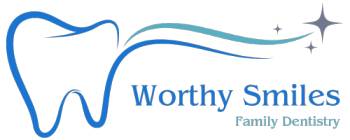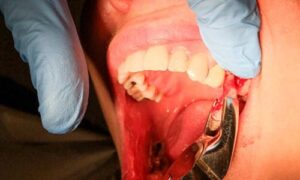Introduction:
Abnormal tooth eruption can lead to various orthodontic issues, impacting the smile’s aesthetics and functionality. Braces are a widely used orthodontic treatment to address these concerns, helping to realign teeth and achieve a harmonious bite. In this article, we will explore cases of abnormal tooth eruption, the role of braces in correction, and showcase before-and-after transformations of individuals who underwent orthodontic treatment.
Common Causes of Abnormal Tooth Eruption
Genetic Factors:
In the realm of orthodontics, genetic factors can significantly influence the way teeth erupt. Individuals may inherit traits that contribute to irregular tooth eruption patterns, impacting the alignment of their teeth. These genetic predispositions can manifest as various issues, such as crowded or misaligned teeth. While genetic factors lay the foundation for tooth eruption patterns, the specific manifestation can vary widely among individuals.
Crowding or Spacing Issues:
Insufficient or excess space within the dental arch can give rise to abnormal tooth eruption. In cases of crowding, where there is not enough room for all teeth to emerge properly, they may shift or tilt, resulting in misalignment. On the other hand, excessive spacing can lead to teeth erupting in positions not harmonized with the overall dental arch. The interplay between the available space and the number of teeth attempting to emerge contributes to the complexity of tooth eruption dynamics.
Impacted Teeth:
When teeth fail to emerge correctly through the gum line, they are called impacted teeth. This condition can disrupt the natural eruption process and lead to various complications. Impacted teeth may be partially or fully obstructed by other teeth or bone, causing them to emerge at an angle or remain entirely submerged. The impaction can create challenges in terms of alignment and maintaining proper oral hygiene around the affected teeth.
Premature Tooth Loss:
The premature loss of primary or permanent teeth can negatively affect the remaining dentition. Early tooth loss disturbs the natural balance within the oral cavity, leading to potential issues with tooth eruption. The surrounding teeth may drift or tip into the vacant space, affecting the alignment of the entire dental arch. This disruption in balance can contribute to abnormal tooth eruption patterns and, if left unaddressed, may necessitate orthodontic intervention to restore proper alignment.
Understanding these common causes of abnormal tooth eruption is crucial in identifying potential orthodontic issues early on. Addressing these factors through timely intervention, such as orthodontic treatments like braces, can help mitigate the impact of genetic predispositions, spacing problems, impacted teeth, or premature tooth loss on the overall alignment and health of the dentition. Regular dental check-ups and consultations with orthodontic professionals are key in effectively identifying and addressing these issues.
Role of Braces in Correcting Abnormal Eruptions
Alignment and Straightening:
One of the primary roles of braces in correcting abnormal tooth eruptions is the alignment and straightening of the teeth. Braces consist of brackets attached to each tooth and a wire that runs through them. This system applies gentle and consistent pressure on the teeth, encouraging them to move gradually into proper positions. The controlled force exerted by braces helps to address issues such as crowding, misalignment, and irregular spacing, resulting in a straighter and more harmonious dental arch.
Correction of Malocclusions:
Braces effectively address various malocclusions, which are misalignments in the upper and lower teeth. Common malocclusions include overbites, underbites, and crossbites. Braces work by guiding the teeth into the correct relationship with each other, correcting the alignment of the bite. This contributes to a more aesthetically pleasing smile and ensures proper function and distribution of biting forces, preventing issues such as uneven wear on the teeth.
Space Management:
Braces are crucial in space management within the dental arch. Whether there is overcrowding or excessive spacing between teeth, braces can help create or close these spaces. In cases of crowding, braces gradually shift the teeth to make optimal use of available space. Conversely, if there are gaps between teeth, braces can close these spaces by gently moving the adjacent teeth closer. This space management contributes to a more balanced and aesthetically pleasing smile band that helps achieve a functional and well-aligned dentition.
The role of braces in correcting abnormal tooth eruptions encompasses the alignment and straightening of teeth, correction of malocclusions, and space management within the dental arch. The comprehensive approach of braces addresses a wide range of orthodontic issues, providing individuals with an improved smile and enhanced oral health and functionality. Orthodontic professionals carefully plan and customize treatment to suit each patient’s unique needs, ensuring effective correction of abnormal tooth eruptions and achieving long-lasting results. Regular monitoring and adjustments during the orthodontic treatment process contribute to the success of the braces to attain the desired outcomes.
Abnormal Eruption Braces Before and After Transformations
Overcrowding:
Before: In cases of overcrowding, individuals may present with crowded and misaligned teeth, affecting the overall aesthetics of their smile. Overlapping and crooked teeth can create challenges in oral hygiene maintenance and may lead to increased risks of decay and gum issues.
After: Following the application of braces, the transformation is evident in the well-aligned teeth. The braces work to gradually reposition the crowded teeth, creating a harmonious and symmetrical smile. The improved alignment enhances the appearance, facilitates better oral hygiene practices, and contributes to overall dental health.
Impacted Teeth:
Before: Impacted teeth can cause visible gaps and misalignment in the dental arch, the failure of these teeth to emerge properly through the gum line disrupts the natural alignment and can lead to complications such as infection or changes in adjacent tooth positions.
After: The successful eruption and alignment of impacted teeth with braces showcase a notable transformation. By applying controlled pressure, braces guide the impacted teeth into their correct positions, improving overall dental harmony. This addresses the aesthetic concerns and ensures proper function and alignment within the dental arch.
Correction of Malocclusion
Before, malocclusion, characterized by a significant overbite or underbite, could impact bite function and oral health. The misalignment of the upper and lower teeth can lead to uneven wear, jaw discomfort, and difficulty in biting and chewing.
After: The correction of malocclusion with braces results in a substantial improvement in the bite function; braces work to realign the teeth, bringing them into the correct relationship. This transformation enhances the smile’s aesthetics and contributes to an improved and functional bite, addressing the underlying issues associated with malocclusion.
In these before-and-after transformations, braces’ impact on addressing overcrowding issues impacted teeth and malocclusion is evident. These transformations highlight cosmetic improvements and emphasize the functional benefits, showcasing the comprehensive effect of orthodontic treatment on individuals’ oral health and overall well-being.
Conclusion: Abnormal Eruption Braces Before and After
Braces are crucial in correcting abnormal tooth eruptions, providing individuals with a more aesthetically pleasing smile, and addressing functional issues related to misaligned teeth. The transformative effects of orthodontic treatment can be visually compelling, showcasing the positive impact of braces on an individual’s dental health and overall well-being. If you’re experiencing issues with abnormal tooth eruption, consulting with an orthodontic professional can help determine the most suitable treatment plan for your needs.
FAQs about Abnormal Eruption Braces Before and After
How long does it typically take for braces to correct abnormal tooth eruptions?
The duration of orthodontic treatment varies depending on the severity of the case. Generally, treatments can last from 18 months to a few years.
Are there age restrictions for getting braces to correct abnormal tooth eruptions?
While braces are commonly associated with adolescents, adults can also benefit from orthodontic treatment to address abnormal tooth eruptions. It’s never too late to seek consultation from an orthodontic professional.
Can braces fix issues caused by premature tooth loss?
Yes, braces can help address problems resulting from premature tooth loss. They can guide the remaining teeth into proper alignment and prevent further complications.
Do braces only correct the alignment of teeth, or can they address other oral health issues?
Braces are primarily used to correct the alignment of teeth, but they can also contribute to addressing issues like malocclusions, jaw misalignments, and certain bite problems.
Are there alternatives to traditional braces for correcting abnormal tooth eruptions?
Yes, alternatives such as clear aligners (e.g., Invisalign) are available for certain cases. However, the suitability of these alternatives depends on the specific orthodontic issues and should be discussed with an orthodontic professional.
What is the role of retainers in maintaining the results after braces for abnormal tooth eruption?
Retainers are crucial post-braces to maintain the corrected alignment. They help prevent the teeth from reverting to their original positions and ensure the long-term success of orthodontic treatment.
Read More:
Invisalign vs Braces: Comparison for Your Orthodontic Journey














